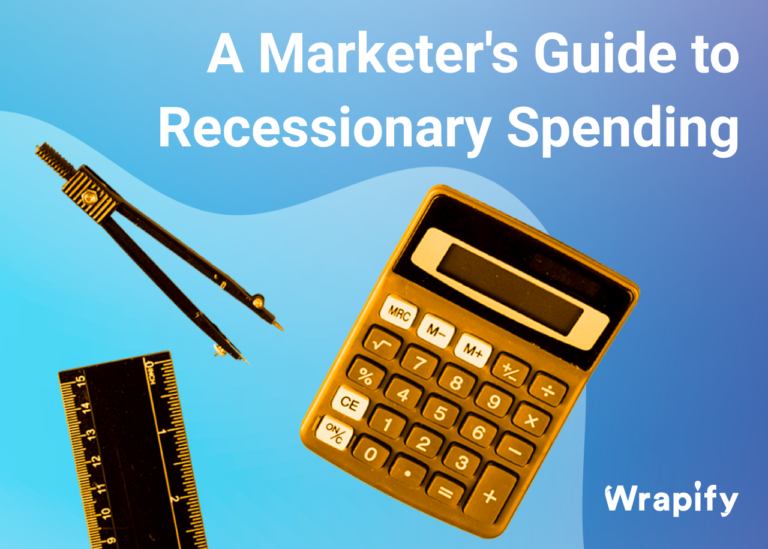COVID-19 has left a mark on the world, and it’s not going away anytime soon. In fact, the economy is expected to take years to recover from this downturn. And for marketers that means recessionary spending mode is activated!
When consumer spending drops significantly during an economic downturn, companies often slash their marketing and advertising budgets. This can be devastating for brands that are trying to stay afloat: without any marketing efforts or ads, what’s going to make consumers choose them over another company? And if they don’t have enough money in their budget for marketing or advertising, how will they compete with other brands who do?
But there is hope! While it may seem like a bad idea at first glance, cutting your advertising budget actually presents an opportunity: now is a good time to create brand awareness while other companies are cutting their ad budgets out of necessity. The availability of ad space goes down when demand goes down, so now is an excellent time to dominate your market share before other companies catch up.
This means you should take advantage of free or discounted advertising space while it lasts—and use this recession as a chance to build up your brand awareness in order to stay ahead of the game when things return to normal.
Why You Should Invest in Marketing Now
Marketing is a long-term investment, but in the short run, it could mean spending more than you’re making. However, in the long run, if you’re smart about it, it can mean earning more than you spend.
In fact, companies who advertise and market aggressively during recessions can maintain or increase sales at a time when competitors are cutting back on advertising budgets and promotions. Why? Because they want to keep their market share!
Brands that don’t spend lose market share… up to 15% of it, to be exact.
“rules of recession-proofing” report
All it takes is for a similarly-sized competitor to double their ad spend right when you’re cutting yours. And because brand building takes time (generally three years), aggressive marketing during a recession gives marketers an opportunity to differentiate themselves from their competition by building brand loyalty early on—and reap rewards later on when consumer sentiment improves again.
In the past, the recession has been a period where businesses cut back. However, smart advertisers know that a recession is actually a golden opportunity. In a recession, buyers become more cautious and spend less, so most companies assume that they’re unlikely to see a return on investment. What they don’t know is that ad space will become cheaper, and customers will be paying attention to branding and marketing more than ever. And what we saw with the pandemic and “revenge travel”, we will likely see with “revenge spending” post-recession.
There’s a sense of mounting anticipation among consumers: they’re eagerly waiting for the economy to bounce back so they can start spending again. When companies develop marketing strategies that encourage trust, conversion, and brand loyalty, they will inevitably reap the rewards of a better economy in a few years.
Building Brand Loyalty with Recessionary Spending
Brand loyalty is especially important because it gives you an edge over competitors when it comes time for advertising again—you’ll have an established audience that trusts you, and your share of the market increases when you advertise during a recession because there’s less competition. This means that you get more bang for your buck! Finally, it’s also a good opportunity to exercise creative marketing skills in order to stand out from the crowd
Some other recession marketing strategies include:
- Encouraging trust: Customers will be more cautious about spending money on products and services during a recession. You need to build trust with your customers so they know they’re buying something they’ll be satisfied with.
- Getting customers to convert: If you have good products and services, then getting customers to convert is not as hard because they will feel good about what they’re buying. You also need to make sure that you have good customer service so that if something does go wrong, they will come back again.
- Keeping brand loyalty: During a recession, there are fewer brands spending on advertising than usual because they don’t have the funds for it—this means that those who do advertise will get more bang for their buck because there isn’t much competition out there! This creates an opportunity for businesses like yours that want their share of the market in order for them to reap the rewards of an improved economy down the road when things start picking up again
Tips for Advertising During a Recession
You don’t have to spend a lot of money to create a brand that stands out. You can use the recession as an advantage by being bold and making a statement about your business and its products or services. Be creative with your marketing, ensure you are driving conversion, and focus on brand development. Also from the same report mentioned above, contextual advertising is king. Consider how your brand can play with certain mediums; OOH advertising is a great playground for content + context.
Contextual advertising is 1.2 to 2.5 times more effective than other forms of advertising, including behavioral targeting.
“Rules of recession-proofing” report
Marketing is a great way to keep your business afloat when things are slow. There are many ways to market during these tough times, and with the right strategies, you’ll be able to reach new customers who have never heard of you before.
At Wrapify, we can help you develop a long-term branding strategy that will drive conversion, create customer loyalty, and keep you moving forward through the struggling economy.
